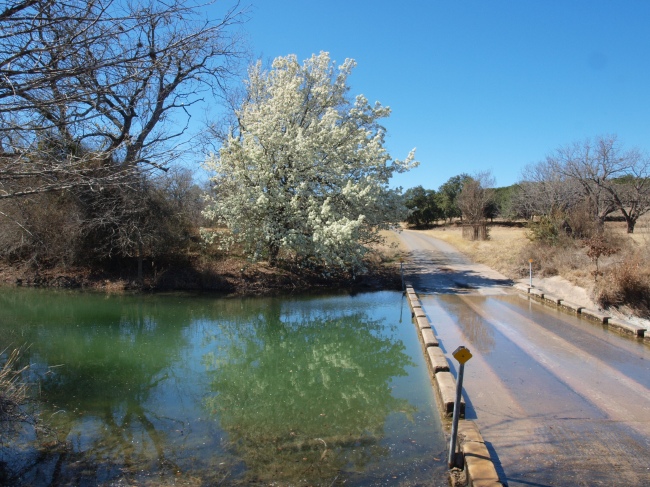
Black foot daisy (Melapodium leucanthum) – Tribe Heliantheae
 Firewheel (Gaillardia pulchella) – Tribe Helenieae
Firewheel (Gaillardia pulchella) – Tribe HelenieaeA humble daisy is the characteristic member of this cosmopolitan group. You can imagine that a plant family with members spread across the globe might well have species occupying a range of niches. The vast diversity is taxonomically captured by dividing the family up into sub families and tribes.
The tribes that you might be the most familiar with are the Heliantheae and Helenieae (the classic daisy form), the Cynareae (artichokes and thistles)

Texas thistle (Cirsium texanum)
, Astereae (which has Golden rod and the fleabanes as members)

Prairie fleabane (Erigeron modestus) – Tribe Asteraeae
and the ubiquitous Chicorieae (dandelions and chicory).

Colorado dandelion
While most asters (or composites) are herbaceous perennial, biennials or annuals there are also shrubs and vines. The complexity of this group extends to its taxonomy and you may see frequent name changes. In fact you might see the family referred to as Compositae! This name is in reference to the classic head inflorescence of the family. The flowers (disc florets) are typically collected together and surrounded by what are termed ray florets. You might be tempted to call them petals but they are in fact a different type of flower to the others on the head. In the image to the left you can see (from outside to center)the large yellow ray florets, the yellow stigmas (female parts) of individual flowers and the brown anthers (male parts) in the center disc florets.
The flowers (disc florets) are typically collected together and surrounded by what are termed ray florets. You might be tempted to call them petals but they are in fact a different type of flower to the others on the head. In the image to the left you can see (from outside to center)the large yellow ray florets, the yellow stigmas (female parts) of individual flowers and the brown anthers (male parts) in the center disc florets.

The curiously square bracts of Nerve- ray (Tetragonotheca texana – Tribe Heliantheae)
Below the inflorescence are bracts that you might mistake for sepals (if you viewed the whole daisy as a flower). The bracts of different species are quite different and might even be sticky or spiky!

Brownish bracts of Navajo tea ( Thelesperma simplicifolium – Tribe Heliantheae)

Helianthus maximiliani

Ratibida columnaris
Here we have a classic example in the case of the sunflower – Maximilian sunflower to be exact (Helianthus maximiliani – Tribe Heliantheae). A variation on this capitulum inflorescence is Ratibida columnifera (also in tribe Heliantheae) where the platform of tiny flowers are proud of the bronze or yellow ray florets.

The multiple inflorescences of Poverty weed
Of course Nature never obeys our taxonomic rules so there are other members of the family that do not have the classic daisy flower. Poverty weed (Baccharis neglecta – Tribe Astereae), for instance, does not conform to the usual idea of a “daisy”. A tall shrub, it grows well in disturbed areas and is very difficult to remove! In fall it becomes very attractive covered with multiple inflorescences. It’s overall silvery appearance earns it a place in the landscape. Come spring I will be wondering how to get rid of it again!

Blue mist flower (Eupatorium coelestinum – Tribe Eupatorieae)
You can see that the inflorescence of poverty weed lacks the ray florets common in other tribes.
They are also much reduced or absent in the Eupatorieae. Blue mist flower (seen here with friend) (Eupatorium coelestinum) is a beautiful summer flowering example of this tribe. There is a wealth of hardy Asteraceae species that can be utilized for different effects in the landscape. They are a global family well worth exploring.





































